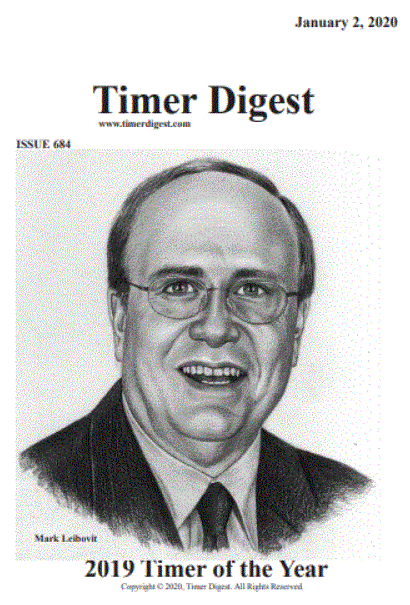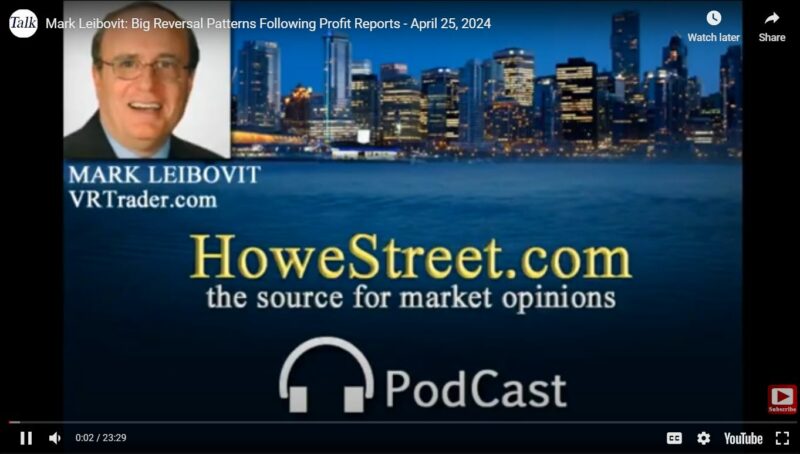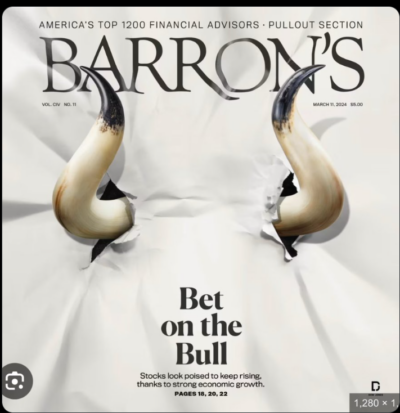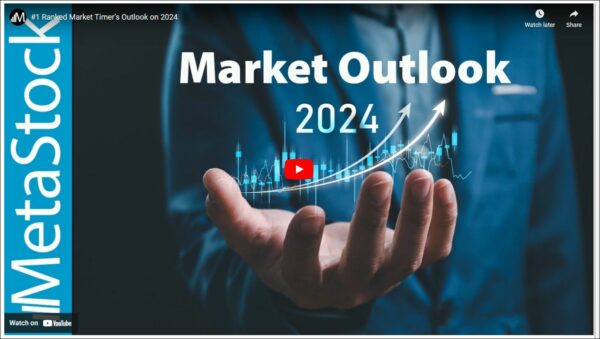
I CALL CORRECTLY CALLED A BULL TRAP. WHY DID CNBC, FOX NEWS, THE WALL STREET JOURNAL HIDE THIS FROM YOU?

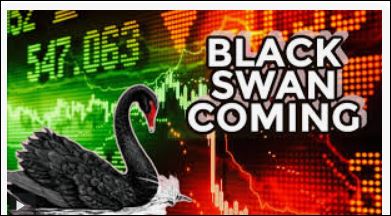
WHAT ABOUT MY CALL FOR BLACK SWANS. WE'VE SEEN A FEW. ARE MORE BLACK SWANS ARE UNDERWAY ? - CAN YOU NAME THE ONES WE'VE JUST RECENTLY EXPERIENCED? CAN YOU GUESS WHAT COULD BE COMING? DO YOU KNOW WORLD WAR III IS WELL UNDER WAY? WHAT ABOUT THE CIVIL WAR THAT HAS BEGUN? ALL FINANCIAL MEDIA CAN TALK ABOUT IS THE FED AND CONCOCTED EARNINGS REPORTS. AND, WHAT ABOUT GOVERNMENT MANIPULATION OF MARKETS USING THE PLUNGE PROTECTION TEAM, ETC. THE FINANCIAL MEDIA IS ON A PUPPET STRING, INFORMATION RELEASES ARE WELL-PLANNED AND SCRIPTED TO KEEP YOU DEPENDENT ON THEM. AS YOU KNOW, I AM AN INTENSE CRITIC OF THE MEDIA, FINANCIAL OR OTHERWISE. WHAT ABOUT GEOCOSMIC SURPRISES SUCH AS THE HUGE TORNADOES THAT STRUCK THE U.S. ON SATURDAY? MY 'SENSE' IS MORE ARE ON THE WAY - POSSIBLE MORE SEVERE THAN WE CAN IMAGINE.
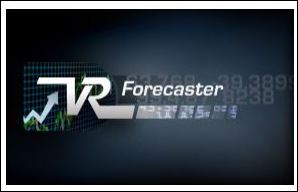
THE VR FORECASTER - ANNUAL FORECAST MODEL
ORDER TODAY AND WE WILL MANUALLY EMAIL YOU THE REPORT BEFORE IT IS POSTED ON THE WEBSITE
HERE IS THE 2023 ANNUAL FORECAST MODEL WITH THE 'RESULTS' SUPERIMPOSED
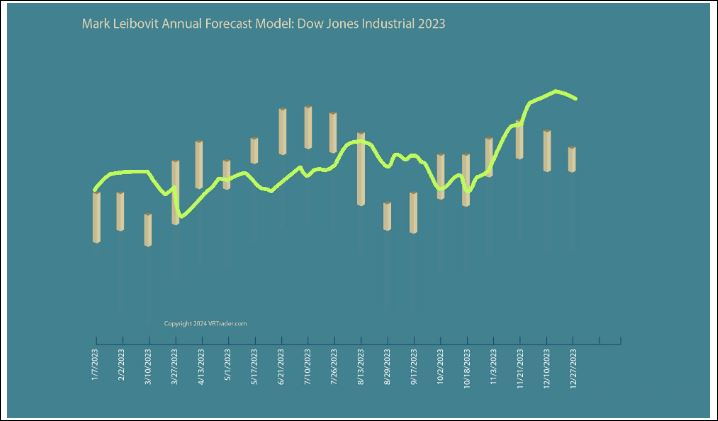
HERE IS THE 2023 ANNUAL FORECAST MODEL FOR BITCOIN WITH THE 'RESULTS' SUPERIMPOSED
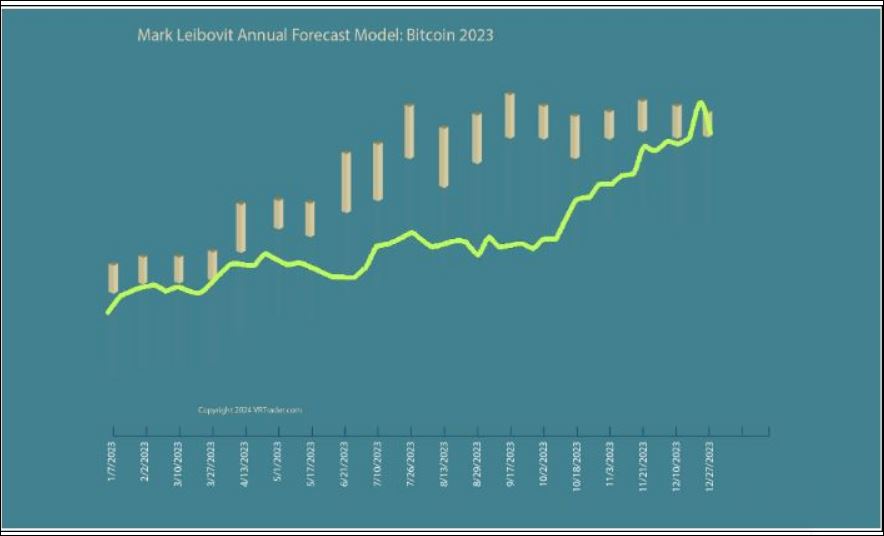
ORDER PAGE
http://tinyurl.com/5f7wb6zs
https://www.howestreet.com/2024/04/big-reversal-patterns-following-profit-reports-mark-leibovit/
WHO IS MARK LEIBOVIT?
MARK LEIBOVIT is Chief Market Strategist for LEIBOVIT VR NEWSLETTERS a/k/a VRTrader.Com. His technical expertise is in overall market timing and stock selection based upon his proprietary VOLUME REVERSAL (TM) methodology and Annual Forecast Model.
Mark's extensive media television profile includes seven years as a consultant ‘Elf’ on “Louis Rukeyser’s Wall Street Week” television program, and over thirty years as a Market Monitor guest for PBS “The Nightly Business Report”. He also has appeared on Fox Business News, CNBC, BNN (Canada), and Bloomberg, and has been interviewed in Barrons, Business Week, Forbes and The Wall Street Journal and Michael Campbell's MoneyTalks.
In the January 2, 2020 edition of TIMER DIGEST MAGAZINE, Mark Leibovit was ranked the #1 U.S. Stock Market Timer and was previously ranked #1 Intermediate U.S. Market Timer for the ten year period December, 1997 to 2007.
He was a 'Market Maker' on the Chicago Board Options Exchange and the Midwest Options Exchange and then went on to work in the Research department of two Chicago based brokerage firms. Mr. Leibovit now publishes a series of newsletters at www.LeibovitVRNewsletters.com. He became a member of the Market Technicians Association in 1982.
Mr. Leibovit’s specialty is Volume Analysis and his proprietary Leibovit Volume Reversal Indicator is well known for forecasting accurate signals of trend direction and reversals in the equity, metals and futures markets. He has historical experience recognizing, bull and bear markets and signaling alerts prior to market crashes. His indicator is currently available on the Metastock platform.
His comprehensive study on Volume Analysis, The Trader’s Book of Volume published by McGraw-Hill is a definitive guide to volume trading. It is now also published in Chinese. Mark has appeared in speaking engagements and seminars in the U.S. and Canada.
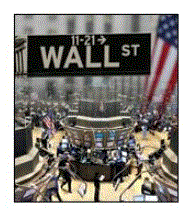
Stocks Rally On Upbeat Tech Earnings
Stocks moved sharply higher during trading on Friday, largely offsetting the weakness seen during Thursday's session. The major averages all moved to the upside on the day, with the tech-heavy Nasdaq leading the charge.
The major averages pulled back off their best levels late in the day but remained firmly positive. The Nasdaq surged 316.14 points or 2.0 percent to 15,927.90, the S&P 500 jumped 51.54 points or 1.0 percent to 5,099.96 and the Dow climbed 153.86 points or 0.4 percent to 38,239.66.
For the week, the Nasdaq spiked by 4.2 percent, the S&P 500 shot up by 2.7 percent and the Dow advanced by 0.7 percent.
The rally on Wall Street came amid a positive reaction to some of the latest earnings news from big-name tech companies.
Shares of Alphabet (GOOGL) soared by 10.2 percent after the Google parent reported better than expected first quarter results and authorized its first-ever dividend as well as a $70 billion stock buyback.
Software giant Microsoft (MSFT) also jumped by 1.8 percent after reporting fiscal third quarter results that exceeded expectations.
Shares of Snap (SNAP) skyrocketed by 27.6 percent after the SnapChat parent reported first quarter results that exceeded expectations on both the top and bottom lines.
On the other hand, shares of Intel (INTC) plunged by 9.2 percent after the semiconductor giant reported first quarter earnings that beat estimates but provided disappointing guidance.
Traders also seemingly reacted positively to closely watched readings on inflation released by the Commerce Department showing consumer prices in the U.S. increased in line with economist estimates in the month of March.
The Commerce Department said its consumer price index rose by 0.3 percent in March, matching the increase seen in February as well as economist estimates.
Excluding food and energy prices, core consumer prices also climbed by 0.3 percent for the second straight month, in line with expectations.
Meanwhile, the report said the annual rate of consumer price growth accelerated to 2.7 percent in March from 2.5 percent in February. Economists had expected the pace of growth to tick up to 2.6 percent.
The annual rate of growth by core consumer prices in March came in unchanged from February at 2.8 percent, while economists had expected the pace of growth to slow to 2.6 percent.
The readings on inflation, which are said to be preferred by the Federal Reserve, were included in the Commerce Department's report on personal income and spending in the month of March.
"Given the elevated levels of inflation - and this is the new normal for 2024 - the market is going to need to get over hopes for Fed rate cuts," said Chris Zaccarelli, Chief Investment Officer for Independent Advisor Alliance.
"We're still optimistic on the market, however, as we believe that rate cuts aren't necessary for the bull market to continue," he added. "Instead, continued economic expansion and growth in corporate profits - which are already seeing from the largest companies in the market - are what will propel stock prices to new highs."
Treasury yields moved lower following the release of the report, which may have helped mitigate any negative response to the data.
Sector News
Semiconductor stocks saw substantial strength on the day despite the slump by Intel, with the Philadelphia Semiconductor Index surging by 2.6 percent.
Significant strength was also visible among software stocks following Microsoft's upbeat results, resulting in a 1.5 percent gain by the Dow Jones U.S. Software Index.
Networking stocks also saw considerable strength on the day, driving the NYSE Arca Networking Index up by 1.5 percent.
Retail, computer hardware and brokerage stocks also showed notable moves to the upside, while utilities stocks bucked the uptrend.
Other Markets
In overseas trading, stock markets across the Asia-Pacific region moved mostly higher during trading on Friday. Japan's Nikkei 225 Index climbed by 0.8 percent, while Hong Kong's Hang Seng Index surged by 2.1 percent.
The major European markets also moved to the upside on the day. While the German DAX Index jumped by 1.4 percent, the French CAC 40 Index and the U.K.'s FTSE 100 Index advanced by 0.9 percent and 0.8 percent, respectively.
In the bond market, treasuries regained ground after moving notably lower over the two previous sessions. Subsequently, the yield on the benchmark ten-year note, which moves opposite of its price, fell 3.7 basis points to 4.669 percent.
Looking Ahead
While the Fed's monetary policy announcement is likely to be in the spotlight next week, traders are also likely to keep a close eye on the monthly jobs report.
Reports on manufacturing and service sector activity may also attract attention along with an avalanche of corporate earnings news.
An estimated 59 or more tornadoes tear across America's heartland, leaving catastrophic destruction in multiple states
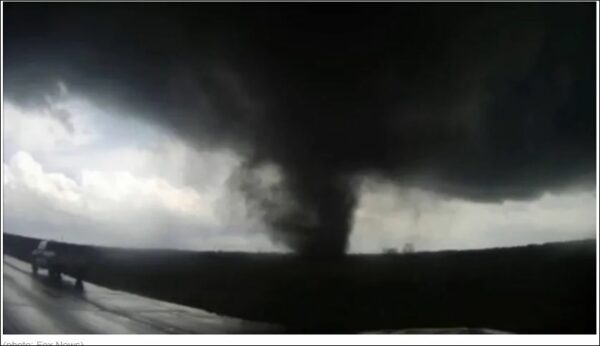
Dozens of tornadoes swept across America's heartland, impacting millions of residents and leaving a trail of destruction.
Twenty million Americans, from Texas to Iowa, are on alert for twisters, large hail and up to 70 mph winds.
There were at least 59 reported tornadoes across Texas, Oklahoma, Kansas, Nebraska and Iowa as of 7 p.m. ET, according to the National Weather Service.
Russia Spooks US With Space Nukes Pivot
Russia has vetoed a draft resolution before the United Nations Security Council banning nuclear weapons in space, spooking the United States. Moscow on Wednesday blocked the resolution, which was drafted by the U.S. and Japan. It would have reaffirmed the obligation of countries to comply with the 1967 Outer Space Treaty—not to place any objects carrying nuclear weapons or any other kinds of weapons of mass destruction in orbit around the Earth.
Cheap Russian drones overwhelm US-made Abrams tanks, taken out of action
Ukrainian forces are withdrawing US-provided Abrams M1A1 main battle tanks from the front lines after at least five have been destroyed by cheap Russian drones, according to the AP.
Russia will target NATO nuclear weapons in Poland if they appear, TASS says
Russia will make NATO nuclear weapons in Poland one of its primary targets if they are deployed there, the TASS news agency cited Russian Deputy Foreign Minister Sergei Ryabkov as saying on Thursday.
."..Moves in this direction will not provide greater security (for Poland or other nations that host such weapons)," TASS quoted Ryabkov as saying.
US troops begin constructing Gaza pier, aiming to have it operational by early May
US troops have begun constructing a maritime pier off the coast of Gaza with the aim of speeding up the flow of humanitarian aid into the enclave when it becomes operational in May, the Pentagon said on Thursday.
US President Joe Biden announced the construction of the pier in March as aid officials implored Israel to ease access for relief supplies into Gaza’s overland routes. Whether the pier will ultimately succeed in boosting humanitarian aid is unclear, as international officials warn of a risk of famine in northern Gaza.
The port sits just southwest of Gaza City, a little north of a road bisecting Gaza that the Israeli military built during the fighting.
THE PRESIDENT'S WORKING GROUP ON FINANCIAL MARKETS
Known colloquially as the Plunge Protection Team, or "(PPT)" was created by Executive Order 12631,[1] signed on March 18, 1988, by United States President Ronald Reagan.
As established by the executive order, the Working Group has three purposes and functions:
"(a) Recognizing the goals of enhancing the integrity, efficiency, orderliness, and competitiveness of our Nation's financial markets and maintaining investor confidence, the Working Group shall identify and consider:
(1) the major issues raised by the numerous studies on the events in the financial markets surrounding October 19, 1987, and any of those recommendations that have the potential to achieve the goals noted above; and
(2) the actions, including governmental actions under existing laws and regulations (such as policy coordination and contingency planning), that are appropriate to carry out these recommendations.
(b) The Working Group shall consult, as appropriate, with representatives of the various exchanges, clearinghouses, self-regulatory bodies, and with major market participants to determine private sector solutions wherever possible.
(c) The Working Group shall report to the President initially within 60 days (and periodically thereafter) on its progress and, if appropriate, its views on any recommended legislative changes."
Plunge Protection Team
"Plunge Protection Team" was originally the headline for an article in The Washington Post on February 23, 1997, and has since been used by some as an informal term to refer to the Working Group. Initially, the term was used to express the opinion that the Working Group was being used to prop up the stock markets during downturns.[5 Financial writers for British newspapers The Observer and The Daily Telegraph, along with U.S. Congressman Ron Paul, writers Kevin Phillips (who claims "no personal firsthand knowledge" and John Crudele,[8] have charged the Working Group with going beyond their legal mandate.[failed verification] Charles Biderman, head of TrimTabs Investment Research, which tracks money flow in the equities market, suspected that following the 2008 financial crisis the Federal Reserve or U.S. government was supporting the stock market. He stated that "If the money to boost stock prices did not come from the traditional players, it had to have come from somewhere else" and "Why not support the stock market as well? Moreover, several officials have suggested the government should support stock prices."
In August 2005, Sprott Asset Management released a report that argued that there is little doubt that the PPT intervened to protect the stock market.[10] However, these articles usually refer to the Working Group using moral suasion to attempt to convince banks to buy stock index futures.
Former Federal Reserve Board member Robert Heller, in the Wall Street Journal, opined that "Instead of flooding the entire economy with liquidity, and thereby increasing the danger of inflation, the Fed could support the stock market directly by buying market averages in the futures market, thereby stabilizing the market as a whole." Author Kevin Phillips wrote in his 2008 book Bad Money that while he had no interest "in becoming a conspiracy investigator", he nevertheless drew the conclusion that "some kind of high-level decision seems to have been reached in Washington to loosely institutionalize a rescue mechanism for the stock market akin to that pursued...to safeguard major U.S. banks from exposure to domestic and foreign loan and currency crises." Phillips infers that the simplest way for the Working Group to intervene in market plunges would be through buying stock market index futures contracts, either in cooperation with major banks or through trading desks at the U.S. Treasury or Federal Reserve.
What is the Plunge Protection Team?
(PPT) is an informal term for the Working Group on Financial Markets. The working group was created in 1988 by then U.S President Ronald Reagan following the infamous October 1987 Black Monday crash. It was formed to re-establish consumer confidence and take steps to achieve economic and market stability in the aftermath of the market crash. The U.S president consults with the team during times of economic uncertainty and turbulence in the markets.
The Working Group on Financial Markets’ informal name “Plunge Protection Team” was coined and popularized by The Washington Post in 1997.
What does the Plunge Protection Team Do?
The Plunge Protection Team was initially formed to advise the president and regulatory agencies on countering the negative impacts of the stock market crash of 1987. However, the team has continued to report to various presidents since that stock market crash and has met various U.S presidents on important financial matters over the years.
The team was believed to be behind the rally in the stock market shortly after a hefty drop in the Dow Jones Industrial Average (DJIA) on February 05, 2018. As per some market observers, after the plunge, the market made a smart recovery in the following days, which may have been a result of heavy buying by the Plunge Protection Team.
Who is on the plunge protection team?
The PPT several top government economic and financial officials. The Secretary of the Treasury heads the group, while the Chair of the Board of Governors of the Federal Reserve, the Chair of the Commodity Futures Trading Commission, and the Chair of the Securities and Exchange Commission, are also part of the team.
Why is the PPT secretive?
The Plunge Protection Team’s meetings or activities aren’t covered by the media, which gives rise to speculations and conspiracy theories about the team. The probable reason behind the secretive nature of its activities is that it reports only to the president. Some observers opine that the team’s role is not only limited to giving recommendations to the president; rather, the team intervenes in the market and artificially props up stock prices.
Critics claim that the members connive with big banks and profit from stock markets by carrying out trades on different stock exchanges when prices decline. They then artificially prop up the prices as part of their market stabilization efforts and profit from their transactions.
When does/have the PPT meet?
Although very little has come out in the mainstream media about the group’s activities, there have been some instances when the team’s meetings were reported. For example, in 1999, the team proposed to congress to incorporate some changes in the derivatives markets regulations. The last reported meeting of the group, at the time of this writing in June 2022, was in December 2018 when Treasury Secretary Steven Mnuchin headed the teleconference with the group’s members. Representatives from the Federal Deposit Insurance Corporation and the Comptroller of the Currency also attended the meeting.
Before the teleconference that took place on December 24, 2018, the S&P 500 and the DJIA had been under pressure for the whole month. But after Christmas, the DJIA and the S&P 500 both recovered and reversed most of the losses in the next few days. Conspiracy theorists attribute the recovery and gains in the indices to the intervention by the Plunge Protection Team.
Final Thoughts
The Working Group on Financial Markets serves an important function: to advise the president on financial markets and economic affairs. Because the exact nature of the group’s activities or recommendations haven't been made public, some critics of the group blame the group for market intervention and artificially propping up stocks’ prices. However, some market observers believe that the team’s quiet activities are excused as it reports directly to the president.
The Exchange Stabilization Fund protects the FED.
We already know the FED is lying that raising interest rates will reduce price inflation. The Exchange Stabilization Fund (ESF) is an emergency reserve account that can be used by the U.S. Department of Treasury to mitigate instability in various financial sectors, including credit, securities, and foreign exchange markets. The U.S. Exchange Stabilization Fund was established at the Treasury Department by a provision in the Gold Reserve Act of 1934.
https://en.wikipedia.org/wiki/
Gold market manipulation: Why, how, and how long? (2021 edition)
https://gata.org/node/20925
https://tinyurl.com/2rd9wv52
OPPORTUNITY TO ACCESS MARK LEIBOVIT'S PROPRIETARY VOLUME REVERSAL INDICATOR - THIS IS THE ONLY PLACE TO DO IT!
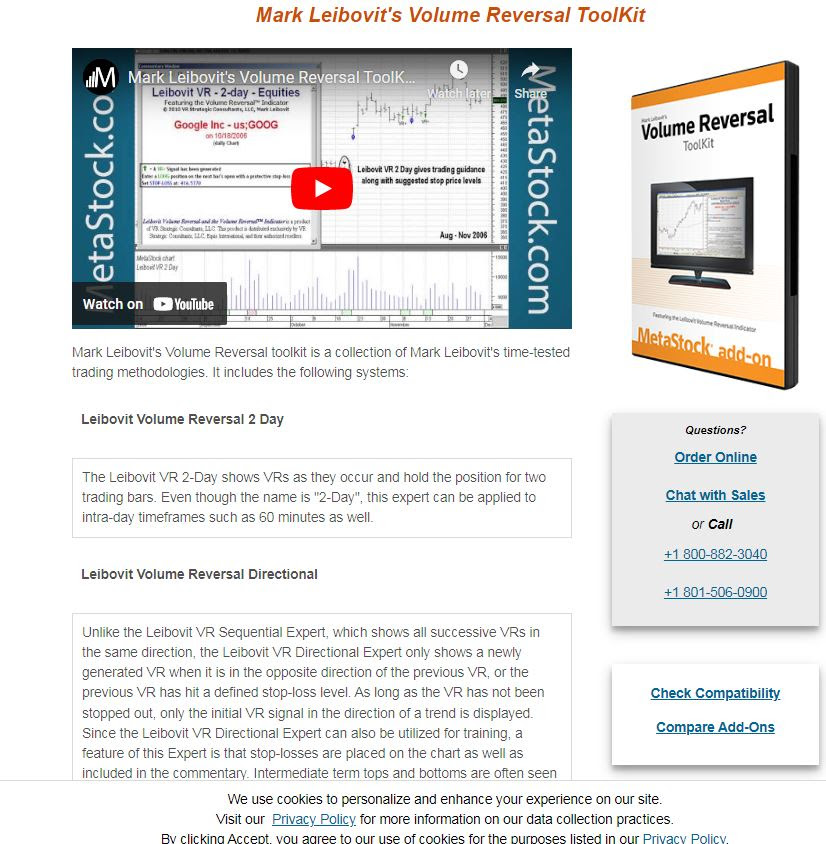
https://www.metastock.com/prod
FOLKS THIS ALL YOU NEEDED TO KNOW! HISTORICALLY A GOOD SIGN THAT WE ARE AT OR NEAR A MARKET TOP = BULLISH MEDIA HEADLINES LIKE THIS. RECALL THE MARCH 10, 2000 TOP HEADLINE IN THE WALL STREET JOURNAL (BELOW) RIGHT AT THE TOP!

DID YOU MISS THE RECENT METASTOCK MARK LEIBOVIT WEBINAR - POWERPOINT?
https://tinyurl.com/yc45s35c


COME ON, DAD. IT'S TIME TO EAT

DISCLAIMER:
WE ARE NOT FINANCIAL ADVISORS AND DO NOT PROVIDE FINANCIAL ADVICE
The website, LeibovitVRNewsletters.com, is published by LeibovitVRNewsletters LLC.
In using LeibovitVRnewsletters.com (a/k/a LeibovitVRNewsletters LLC) you agree to these Terms & Conditions governing the use of the service. These Terms & Conditions are subject to change without notice. We are publishers and are not registered as a broker-dealer or investment adviser either with the U.S. Securities and Exchange Commission or with any state securities authority.
All stocks and ETFs discussed are HYPOTHETICAL and not actual trades whose actual execution may differ markedly from prices posted on the website and in emails. This may be due internet connectivity, quote delays, data entry errors and other market conditions. Hypothetical or simulated performance results have certain inherent limitations as to liquidity and execution among other variables. PAST RESULTS ARE NOT NECESSARILY INDICATIVE OF FUTURE FORECASTING ACCURACY OR PROFITABLE TRADING RESULTS.
All investments are subject to risk, which should be considered on an individual basis before making any investment decision. We are not responsible for errors and omissions. These publications are intended solely for information and educational purposes only and the content within is not to be construed, under any circumstances, as an offer to buy or to sell or a solicitation to buy or sell or trade in any commodities or securities named within.
All commentary is provided for educational purposes only. This material is based upon information we consider reliable. However, accuracy is not guaranteed. Subscribers should always do their own investigation before investing in any security. Furthermore, you cannot be assured that your will profit or that any losses can or will be limited. It is important to know that no guarantee of any kind is implied nor possible where projections of future conditions in the markets are attempted.
Stocks and ETFs may be held by principals of LeibovitVRNewsletters LLC whose personal investment decisions including entry and exit points may differ from guidelines posted.
LeibovitVRNewsletters.com cannot and do not assess, verify or guarantee the suitability or profitability of any particular investment. You bear responsibility for your own investment research and decisions and should seek the advice of a qualified securities professional before making any investment. As an express condition of using this service and anytime after ending the service, you agree not to hold LeibovitVRNewsletters.com or any employees liable for trading losses, lost profits or other damages resulting from your use of information on the Site in any form (Web-based, email-based, or downloadable software), and you agree to indemnify and hold LeibovitVRNewsletters.com and its employees harmless from and against any and all claims, losses, liabilities, costs, and expenses (including but not limited to attorneys' fees) arising from your violation of this agreement. This paragraph is not intended to limit rights available to you or to us that may be available under the federal securities laws.
For rights, permissions, subscription and customer service, contact the publisher at mark.vrtrader@gmail.com or call at 928-282-1275 or mail to 10632 N. Scottsdale Road B-426, Scottsdale, AZ 85254.
The Leibovit Volume Reversal, Volume Reversal and Leibovit VR are registered trademarks.
© Copyright 2024. All rights reserved.




